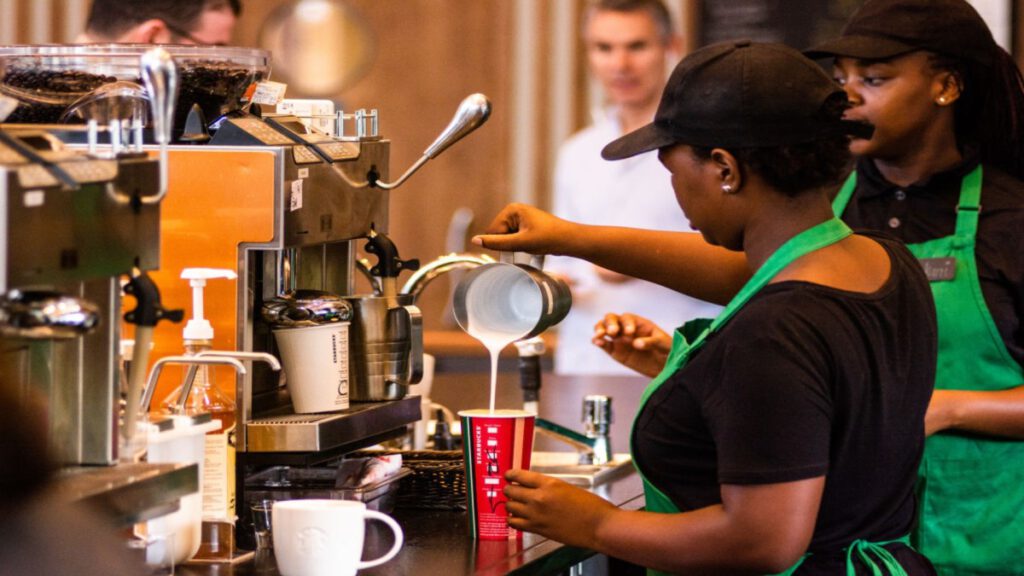Starbucks has said it wants to “deepen human connection.” Yet, its latest move may have just contradicted that philosophy, even as the company works through a major turnaround to return to its roots and deliver a more personalized coffeehouse experience.
The coffee giant revealed it has begun rolling out AI-powered automated inventory counting across its U.S. stores to improve operational efficiency and free baristas from time-consuming tasks.
How AI-powered automated counting works
- Baristas can scan shelves and storage areas with a tablet
- Computer vision technology identifies products
- 3D spatial mapping detects shelf space and product placement
- Augmented reality overlays reveal what’s in stock and what’s missing
- The system automatically counts items
- AI flags low-stock products before they run out
With this system, baristas can spend less time manually counting inventory in the back room and more time connecting with customers. Starbucks says the new technology will ensure ingredients are consistently available, leading to faster service and fewer disruptions.
Image source: Swiegers/Bloomberg via Getty Images
Why Starbucks is betting on AI-powered inventory management
The inventory technology has already been implemented across thousands of stores and will be available at all company-operated locations nationwide by the end of September.
According to Starbucks (SBUX) , the system counts inventory eight times more frequently than traditional methods, offering real-time visibility and enabling quicker, more accurate restocking.
Beyond improving its in-store experience, the technology also strengthens Starbucks’ supply chain by optimizing deliveries and reducing unnecessary restocks, which will help it have fewer shortages and smoother operations overall.
Inventory management matters in the food industry
Inventory management is one of the most critical factors in running a successful food business. This process involves tracking and controlling the ingredients and supplies needed for daily operations, requiring staff to monitor stock levels to ensure that the right products are always available when needed.
When done effectively, inventory management reduces waste, controls costs, maintains quality standards, ensures customer satisfaction, and helps businesses stay compliant.
More Food News:
- Struggling restaurant chain faces sale after closing dozens of locations
- Energy drinks face an unexpected ban
- Taco Bell brings back discontinued fan-favorite menu items nationwide
However, when mismanaged, the consequences can be very costly. According to the National Restaurant Association, 75% of restaurants struggle to remain profitable due to inventory and food cost management issues.
Manual inventory tracking has long been the industry standard, but it is often time-consuming and requires significant labor hours that can disrupt daily operations, especially when staff is limited.
Additionally, human error, estimated at around 5%, frequently leads to overstocking or understocking, both of which cost businesses valuable time and money.
Adoption of AI inventory technology remains slow but profitable
To combat these inefficiencies, more food businesses are turning to modern tools. Automated systems and dedicated restaurant inventory technology can make the process faster and more accurate, reducing reliance on outdated manual methods.
According to Apicbase, restaurants using inventory management software can reduce inventory mistakes and overstocking by around 17%.
Despite the benefits, as of 2024, only 52% of restaurant operators plan to invest in new technology for inventory control.
Although this technology is not error-free, that reluctance could mean a missed opportunity to improve revenue. Data from 5X show that restaurants using analytics have seen a 5% to 10% revenue boost, a 15% reduction in operating costs, and up to 20% improved EBITDA.
Related: Starbucks plans major change to how it adds new menu items




